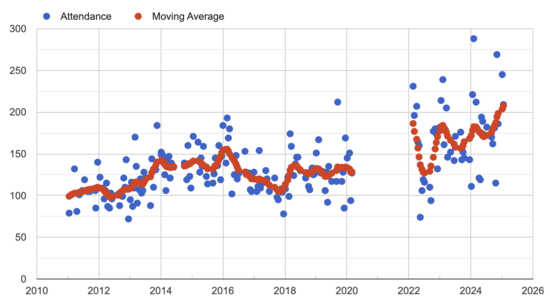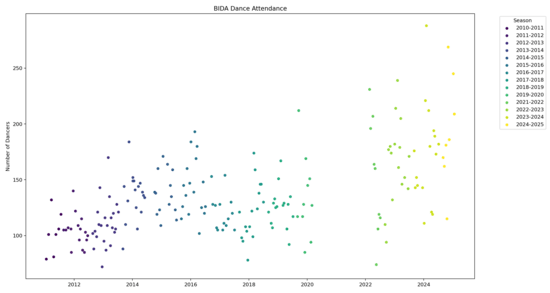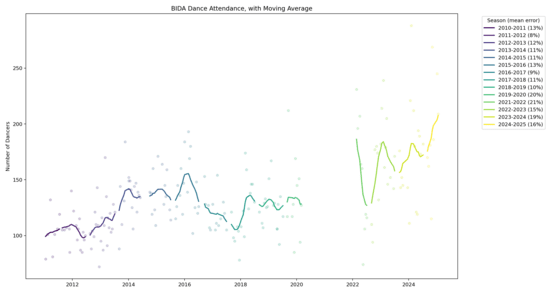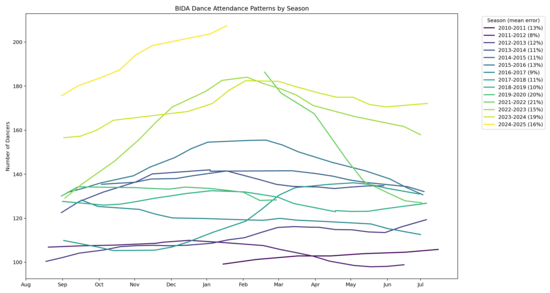Published on February 2, 2025 2:40 AM GMT
We've been keeping attendance statistics for BIDA since 2011, and looking at the online chart I noticed some patterns in the moving average that looked seasonal:
How seasonal is it?
First, here are the raw attendance values:
This excludes special events (family dances, double dances, bonusdances, Spark in the Dark) and our new 4th Sunday afternoon series.To make it a bit clearer, let's add a moving average:
A seven dance sliding window, where the dances are weighted1,2,3,4,3,2,1. This is the same weighting as on the website.
Attendance grew to a peak at the beginning of 2016, fell to a troughat the beginning of 2018 (prompting me to write a worried blogpost), recovered in 2018 and stayed ~level until the pandemic hit,and then has really taken off since resuming.
I still see the seasonal pattern that prompted me to look into this,but I think it would be clearer if I lined up the seasons:
It does look like attendance tends to be higher in the winter, andprobably also like the pattern is becoming stronger? Some guesses atwhy:
There are more options for things to do in Boston in warmerweather. When it's nice outside an indoor dance is relatively lessattractive. This is true both day-of (if it's nice outside you mightgo hang out in a park or do a tiring activity during the day) and withadvance planning (weddings, festivals, trips, etc are less likely tobe planned for winter because of the typical weather). From the otherdirection, the warm social atmosphere of the dance might be somethingpeople are especially looking for in the coldest and darkest part ofthe year.
BIDA is increasingly attracting students, who are less likelyto be around in summer. The founding cohort had recently graduatedcollege, and initially it seemed like the average age was going up byabout one year per year. More recently, though, it seems like thereare a lot more younger dancers. Though as I get older I have troubletelling college students from recent graduates, and it's possiblethere aren't actually that many students.
The hall is at its most pleasant when we can bring in lots ofcold dry air, and this is a larger effect the more dancers we have.This is why we don't dance in the summer, but the dances at thebeginning and end of our season can be pretty warm and humid, whichalso makes the floor stickier.
On the other hand, judging from our latestsurvey this is a pretty covid-cautious group, and it's a bitunexpected that the seasonality of dancing post-resumption would matchthe seasonality of covid. To the extent people are trying to avoidrespiratory illness I'd guess they'd try to shift dancing towardstimes of the year with lower infection risk? But to the extent peopleare doing this it's apparently not large enough to overcome thefactors pushing the other way.
I'm curious what seasonality looks like at other dances, if anyone hasdata they can share!
Discuss





